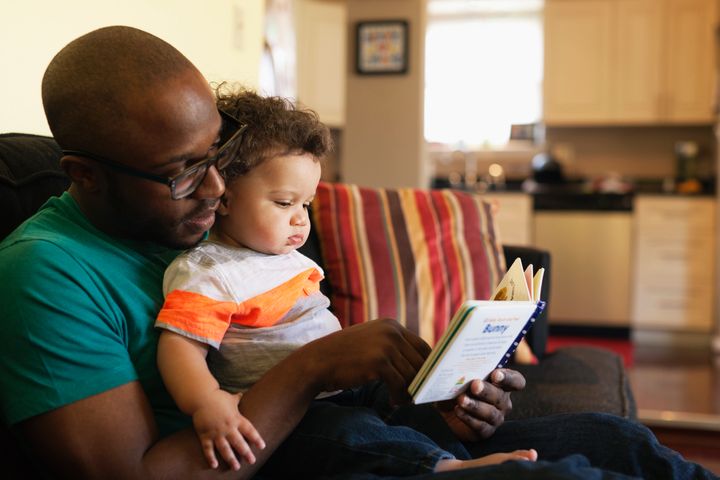News
4 Simple Ways To Teach Really Young Kids About Representation
Parents may have the best of intentions when it comes to raising children who understand the importance of representation and who embrace diversity, but the window they have to fundamentally shape their values and beliefs before biases start to form is startlingly brief.
According to the American Academy of Pediatrics (AAP), by age 2 children start to internalize racial biases. And by the time they’re 12 or so, many kids are basically “set” in their beliefs.
Yet there are relatively simple, practical steps that parents can take to help teach really young kiddos (think babies and toddlers) to appreciate diversity and that may help them as they go out into a world marred by systemic inequality.
Have a little one at home? Here are four strategies to consider right now.
Expose babies to different types of faces.
Experts now know that babies pick up on differences when they’re really, really new. Like, by the time they’re 6 months old, babies brains’ can notice racial differences in the people they encounter.
“We know from infant attention studies that babies can distinguish Black faces from white faces,” said Sandra Waxman, a developmental scientist and professor of psychology at Northwestern University who has spent years studying what babies think and how they learn about the world around them. “They can distinguish females from males.”
And babies show a strong “looking preference” for the types of faces they’re exposed to most often, Waxman said.
That is not to say that babies are biased in any way. Or that the particular looking preferences a baby has at, say, 6 months old are “infused with meaning,” Sandy said.
However, it is something for parents to be mindful of, if for no other reason than it might make you tune into whether your own social network is as diverse and multicultural as you’d really like it to be as your children grow up and do much of their learning by modeling you.
Load them up with diverse books. (Including those in which diversity isn’t the “point.”)
Children’s books still have a long way to go, but publishers have done a better job in recent years of putting out picture books that are filled with characters who are racially diverse, who have disabilities, who have diverse body types, and that feature LGBTQ characters.
“As Rudine Sims Bishop notes, we need ‘window, mirror, and sliding door’ books,” explained Erin Walsh, co-founder of the Spark and Stitch Institute, which teaches parents strategies for navigating a digital world. “Because we need stories in which children can see reflections of themselves, but also look through and see other worlds.”
It’s a mistake if your kiddos’ library seems diverse, but it’s only filled with books about oppression and injustice (“this reinforces narrow understanding of people’s lived experiences,” Walsh explained). It’s also important to read your kiddo plenty of “any child” books, which are diverse but the characters’ identity is not central to the plot.
That may be particularly true of books for babies and toddlers, which are obviously very simple narratively. Representation matters even for the youngest readers, and there’s no reason why, say, board counting books should feature characters who are predominately white.
Look at what they’re playing with.
Given that young children learn so much through play — sharpening language, social, physical and cognitive skills — it is important to try and fill their toy bins with diverse options.
“Children learn and create understanding of the world through play. Many parents focus on shows and books, but children’s toys, dolls, and action figures are opportunities to disrupt stereotypes and/or reflect children’s similarities and differences,” Walsh said.
Babies don’t really tune into what they’re gumming or drooling over, but toddlers and preschoolers certainly notice what they’re playing with every day.
There are limits to all of this, of course. Simply expanding your child’s access to multicultural, gender-neutral toys will not make them immune to broader cultural stereotypes.
“Our job as parents is to make sure they don’t learn bias — but the point of fact is that it’s well nigh impossible,” Wexman said. Try anyway, she urged.
Talk, talk, talk.
Because biases set in sooner than some parents realize, they may be putting off conversations around representation, diversity, equity, inclusion — all of it — longer than you should. Start young. Like, when they’re toddlers or preschoolers.
Waxman said it’s not parents’ fault that their children are living in an unequal world where they will be steeped in racist, sexist and ableist messages. “What is our fault is when we don’t address it,” she said.
And there is plenty of evidence that so-called colorblindness, and other approaches that teach children “not to see difference” do not work. Children do see the ways in which we are all different, and teaching young children not to ask questions sends the message that difference is taboo.
Again, all of these are small steps and a small piece of a much larger puzzle. But they are also actionable, and Waxman said that in many ways with young kids, the goal is simple: Just help “normalize that people are different.”
This story is part of a HuffPost Parents project called I See Me, a series for all parents and kids on the power of representation. We know how important it is for kids to see people that look like them on the biggest stages, from politics to sports and entertainment and beyond. Throughout February, we’ll explore the importance of representation in teaching kids about difference, acceptance, privilege and upstanding.
Read more

